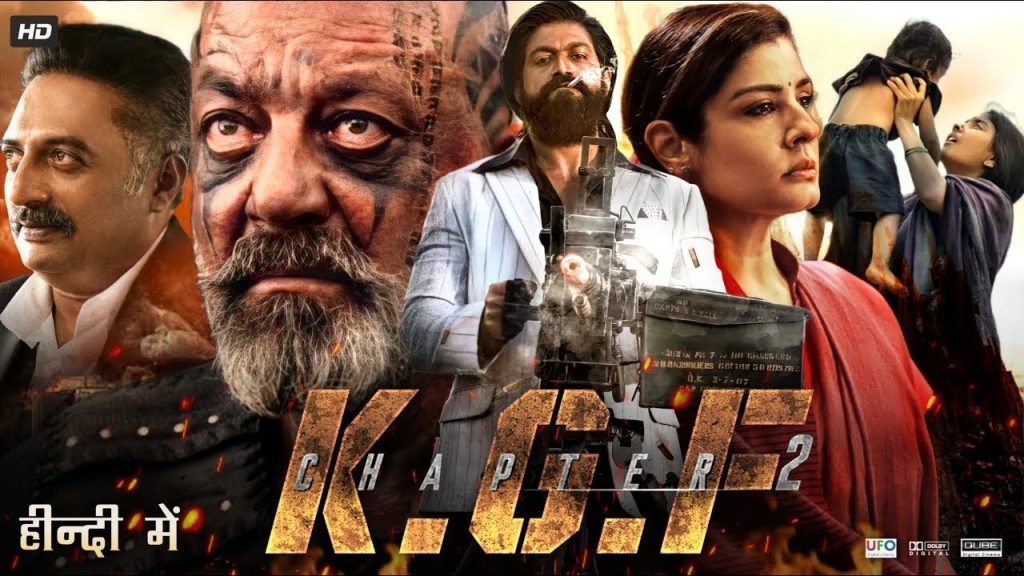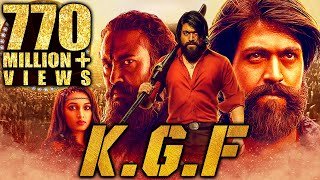While on the surface it’s a high-octane action blockbuster, KGF Chapter 2 is a mythic saga about the hunger for power, the scars of poverty, the psychology of tyranny, and the making of a legend.
This is not just a sequel—it’s the evolution of a man into a myth, a street orphan into a god of war, and a gold mine into a kingdom built on fire, fear, and faith.
🧠 1. Rocky – The Man, The Myth, The Messiah
From Man to Monument
In Chapter 1, Rocky emerged from the slums of Bombay, driven by his dying mother’s words:
“You must die as the most powerful man.”
In Chapter 2, that prophecy begins to take divine shape. Rocky is no longer just a gangster—he is now a ruler, a messiah to the oppressed workers of KGF, and a nightmare to politicians and empires alike.
But here’s the depth: Rocky is not invincible—he is calculating, emotionally complex, and acutely aware of the fragility of power. He walks like a god, but carries the loneliness of a man who can trust no one.
He doesn’t fear death—he fears being forgotten.
🧨 2. Power Politics – More Than Gold
Chapter 2 shifts from a gangster drama to a political epic. The gold mines are no longer just a resource—they are a symbol of economic dominance and political leverage.
Adheera (Sanjay Dutt)
- A Viking-inspired warlord.
- Represents raw, primal brutality, unbound by diplomacy.
- Challenges Rocky not just physically but ideologically—Adheera believes fear must be constant, not earned.
Ramika Sen (Raveena Tandon)
- The Prime Minister of India.
- Intelligent, unafraid, and deeply nationalistic.
- She’s not a villain—she’s a counterforce to Rocky’s underground empire.
- Her war with Rocky is not personal—it’s philosophical: Can one man be bigger than the nation?
🛠️ 3. The Gold Mine – A Living, Breathing Symbol
The Kolar Gold Fields are not just a location—they’re a character. A furnace where gold is forged, but also where men are broken or reborn.
- For the workers, Rocky is a liberator.
- For the world, the mines are a threat.
- For Rocky, KGF is a throne of ashes and ambition.
The mine becomes a metaphor for power: whoever controls it, controls perception, wealth, and fear.
🔥 4. Style & Symbolism – Operatic, Not Just Cinematic
The film is deliberately mythic in tone. Every action, shot, and line is drenched in larger-than-life symbolism.
- Slow motion isn’t just style—it’s a way of turning each moment into legendary theatre.
- Fire surrounds Rocky constantly—he is both its creator and its survivor.
- The color gold is omnipresent—not just in the mine, but in Rocky’s chains, clothes, and weapons. Gold = blood + power.
The camera worships Rocky, but the script also shows his emptiness, especially when alone. He is a king surrounded by followers, yet absolutely isolated at the top.
💣 5. Psychological & Emotional Themes
A. Motherhood and Memory
Everything Rocky does is driven by the voice of his mother. Her pain, her humiliation, and her final wish become the moral compass of a man who otherwise lives without rules.
He isn’t just chasing power—he is chasing validation from a memory.
B. The Fear of Obsolescence
Rocky’s biggest fear isn’t death—it’s irrelevance. He builds an empire so grand that no one can ignore him. But in doing so, he realizes:
The higher you rise, the more you must destroy to stay there.
C. Morality in the Shadows
There are no pure heroes or villains in KGF.
- Rocky murders, but he frees the enslaved.
- Ramika fights for the law, but she manipulates the system.
- Adheera kills without guilt, but believes in honor.
It asks the question:
Can you be righteous if your hands are bloodied for the right cause?
🎭 6. Performances – Grand Yet Grounded
- Yash as Rocky is magnetic. His silence roars louder than speeches. His charisma isn’t just style—it’s a mask for pain.
- Sanjay Dutt gives Adheera mythic rage—his presence alone evokes dread.
- Raveena Tandon plays Ramika with steel—a woman not afraid to confront gods.
- Rao Ramesh and Prakash Raj as narrators connect the saga to the future, giving it mythological weight, like an epic being told to new generations.
🧱 7. Architecture of Power – The World-Building
The world of KGF is built like an empire in a fever dream:
- Grand statues, black dust, steel fortresses—everything is scaled to God-level.
- Rocky’s headquarters feel like a mythic castle.
- Adheera’s army marches like a medieval tribe with guns.
- Ramika’s office is like a modern temple of democracy, cold and pristine.
Each setting isn’t random—it reflects the psychology of its occupant.
🎇 8. The Ending – Legacy, Sacrifice, and the Unknown
The climax is operatic: a bloody culmination of everything Rocky built, and everything he stood to lose.
In death, Rocky becomes immortal.
In destruction, his story is engraved into folklore.
He chooses to go down in fire—a conscious myth-making act. He buries his gold, not to hoard it, but to ensure his name outlasts even fortune.
📜 Final Message
KGF Chapter 2 is not just about gold, guns, or glory. It is about:
- The myth-making of men who refuse to be ordinary
- The psychological cost of building an empire
- The truth that power is not taken—it is seized and then survived
Rocky’s legacy is not that he ruled—but that he refused to bow. He didn’t just want to win. He wanted to be remembered like a storm that once passed through history and changed the air forever.
🪓 Conclusion: A Saga, Not a Sequel
KGF Chapter 2 doesn’t just continue a story—it elevates it into modern mythology. It’s about rage born from poverty, ambition born from memory, and power earned through unrelenting fire.
It’s a film that knows it’s larger than life—and yet, at its heart, it’s the story of a boy who lost his mother and chose to become a legend so no other child would feel powerless again.

